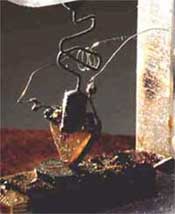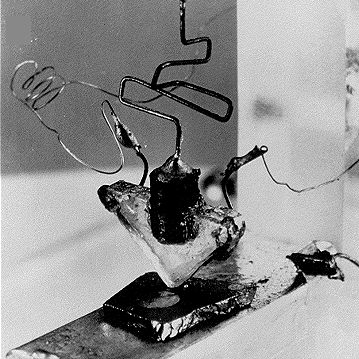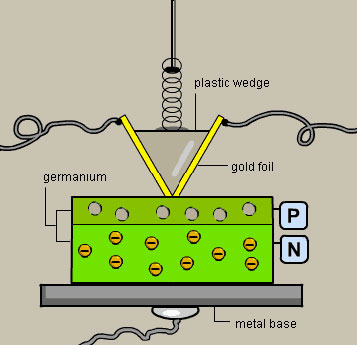The short answer is that SKCC is possibly the greatest ham radio organization since the ARRL. The Straight Key Century Club or SKCC was created in 2006. History of the organization is well documented here: https://www.skccgroup.com/member_services/club_history/
SKCC is composed of tens of thousands of hams who love doing “manual”(1) Morse Code (CW), who recognize that the early stages of learning CW are not easy, and who are willing to do whatever it takes to help others learn this skill. Nobody is born with CW skill and SKCC members have not forgotten the time when they too were struggling with code at 3 to 5 words per minute. The SKCC segments in each band are safe places where beginners are welcome.
SKCC provides a wonderfully designed environment that promotes the use of CW. CW skill is built up by one thing only and that’s doing it — sending and receiving in a conversation. Reading about it, thinking about it, or owning lots of keys doesn’t improve your code. Nor does spinning across the band looking for a suitable contact improve your code. A lot of time can be wasted on the latter, time that would be better spent sending receiving code in conversation with a real person. SKCC provides all the ingredients for solving this problem.
SKCC has a large membership and an excellent sked / chat facility on the web where SKCC members can announce their presence and connect with other members for QSOs. There are many levels to membership that are earned by making contacts with other SKCC members. There is an extensive awards program for WAS, DXCC, QRP, types of keys you’ve mastered, ragchewing, and much more, all driven by making contacts. The result is that SKCC is a very active group where all day long you can immediately find people to talk to, people who are highly motivated to make a contact with you because they are chasing one goal or another and need to make contact with you. I’ve never encountered a group / environment that is as well thought out as SKCC and it works really well.
My own story of coming to SKCC is perhaps a bit unusual yet SKCC is just what I needed. In the 1990s I built up my Morse Code ability solely for the purpose of contesting. I drilled myself on copying callsigns and exchanges at high speed using programs like RUFZ. Sending was all done by computer with automated exchanges or occasional typing. I never had a single ordinary conversational QSO with anyone. In 1996 I quit contesting and for next 26 years used only digital modes or voice.
In 2021 I resolved to finally learn Morse Code properly and learn to converse. I joined SKCC in July of 2021 but still didn’t get on the air. I had to relearn code. I practiced extensively “offline” and listening to code on the air. Finally on March 3 of 2022, I took the plunge, extremely nervous that I would make a fool out of myself. Whoever heard of an ex-contester who can’t have a normal conversation on CW? Can’t even happen, right? Well it can.
As it turned out, my concerns and cause for nervousness were completely unfounded. Nobody made fun of my early fumbling and mistakes. Now that I’ve been in the SKCC group for a while and have become comfortable with conversational CW, I realize that nobody even noticed my early stumblings(2). I look back on it all today and see that I was a fool for not doing this long, long ago.
If you are hesitating about getting into Morse Code, believing you can’t do it or believing that people will roll their eyes if you make a mistake, don’t. Neither is true. Don’t be like me, putting it off for one reason or another. The human mind is great at coming up with endless excuses to procrastinate. Today, I’m kicking myself for not doing it years sooner. Just in the short time I’ve been participating with SKCC, I’ve run into several people who, like me, are kicking themselves for not doing it sooner. Please don’t become another one like me.
If you have any interest in “someday” learning CW, do it now. Join SKCC and jump in: https://www.skccgroup.com/ Do it now.
Footnotes:
(1) By manual CW I mean doing it by hand using mechanical keys without electronic assistance. To log an “official” SKCC contact one must use a mechanical key such as a straight key, sideswiper or Vibroplex type bug. No electronic keyer paddles or keyboards.
(2) I’ve learned quite a number of surprising (to me) things about Morse Code. One of them is that copying code that is malformed or that contains errors is not difficult. My experience with code in the 1990s was exclusively with perfect machine generated code with no errors and perfect timing. Earlier this year when I first tried to copy code that was less than perfectly formed, it was jarring and in some cases uncopyable for me. I had to spin the dial. This prevented me from calling CQ for a while.
When searching for contacts I can pick and choose. When calling CQ, anyone might answer. What if I can’t copy them? That would be awful. But I noticed that the errors didn’t seem to prevent conversation with others. What’s going on here? Obviously, the problem was me, but how to fix it? Turns out the problem fixed itself, and quickly.
The human brain is an amazing thing. I discovered that as my skill improved, copying code with poor timing and lots of errors quickly became effortless. Someone might send the letter “P” but with a delayed final dit. Out of context it sounds like “WE”. But the brain copies conversational code IN context and it sounds like a P with a delayed final dit, not WE. It’s not a head-scratcher, it’s hardly noticeable. So all my early concerns and nervousness about sending and receiving imperfect code were unfounded. Don’t let perfection stop you. Nobody sends perfect code and it’s fine.



Recent Comments